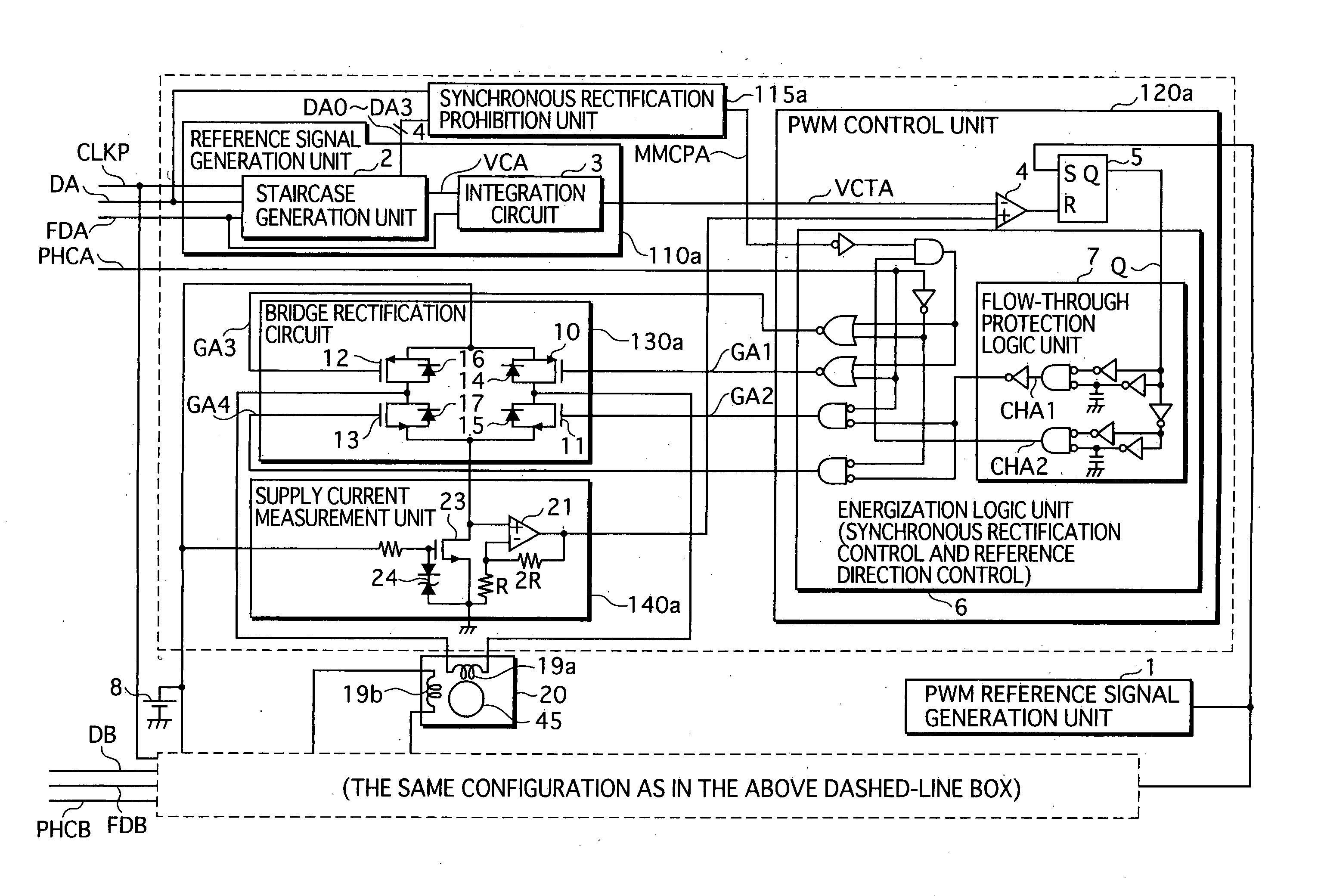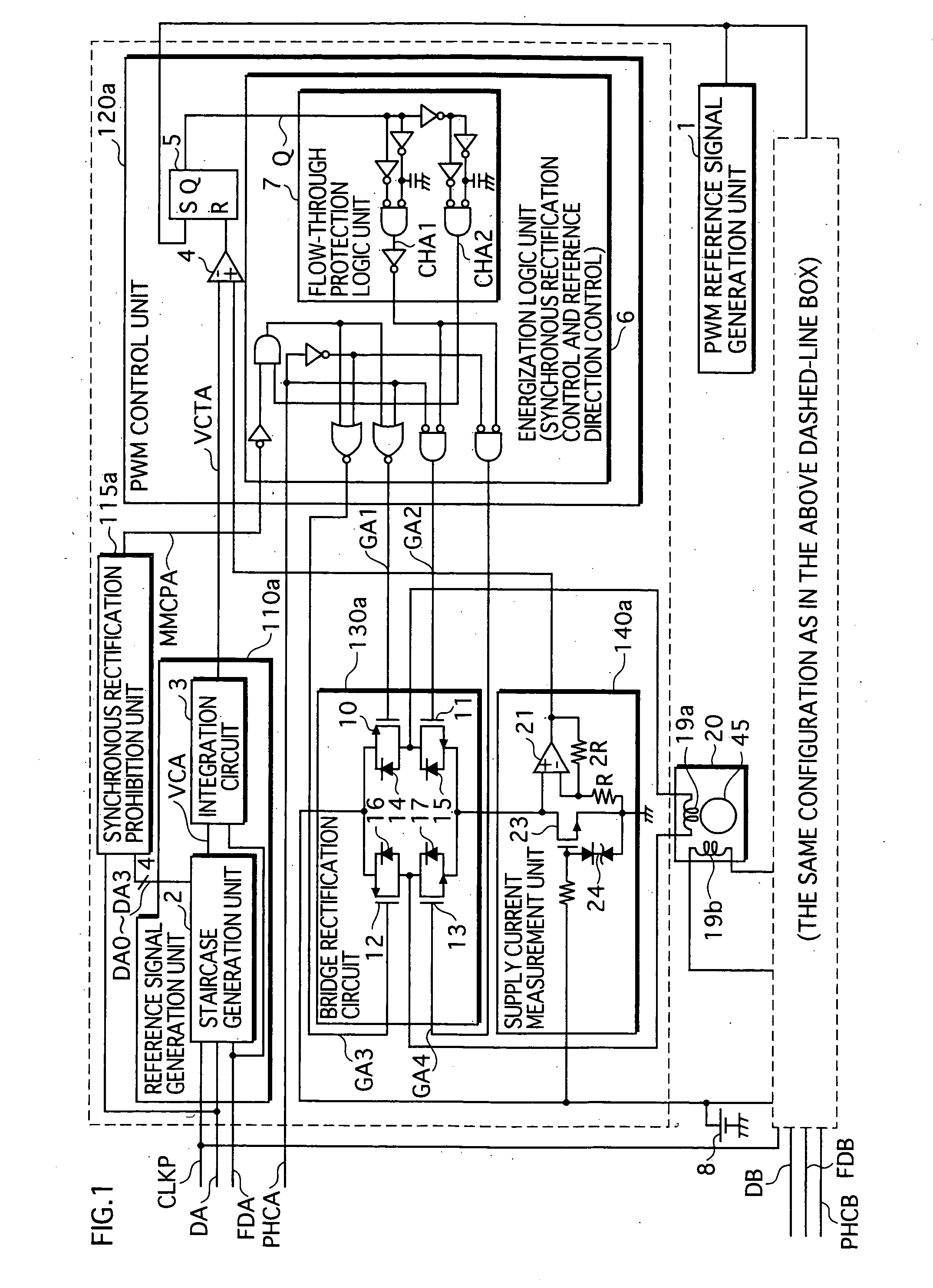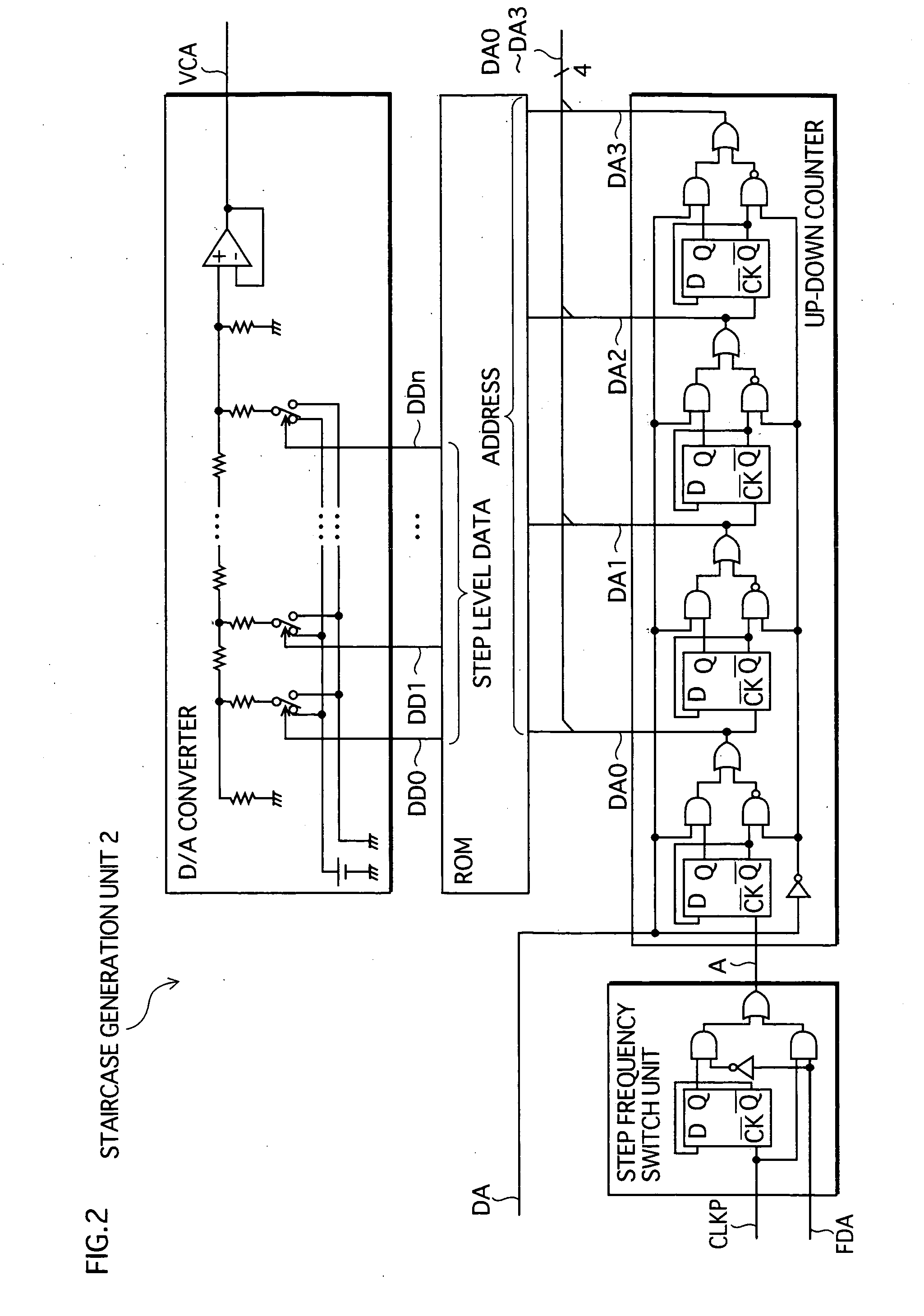Stepping motor drive device and method
a technology of stepping motor and drive device, which is applied in the direction of motor/generator/converter stopper, dynamo-electric converter control, electric controller, etc., can solve the problems of slow attenuation of coil current at the time of the staircase signal decrease, poor follow-up of coil current of the staircase signal, and degradation of the recorded image, etc., to achieve rapid rate, adequate reduction of vibration and noise, and enhanced power supply
- Summary
- Abstract
- Description
- Claims
- Application Information
AI Technical Summary
Benefits of technology
Problems solved by technology
Method used
Image
Examples
first embodiment
1. First Embodiment
[0083] A stepping motor drive device of the first embodiment of the present invention generates a reference signal whose signal level changes continuously over time. The level of the reference signal represents a limit value for the supply current. Here, ‘a signal whose level changes continuously over time’ means that the signal does not have abrupt, stepwise changes in the signal level. Examples of such signals are a sine wave signal, a triangular wave signal whose rises and falls are inclined, and a trapezoidal wave signal.
[0084] The stepping motor drive device exercises PWM (Pulse Width Modulation) control on a current supplied to the motor coil, according to the limit value represented by the generated reference signal. More specifically, the PWM control is executed using a current chopper method.
[0085] In addition, the stepping motor drive device implements synchronous rectification. In this rectification process, a switch for the synchronous rectification ...
second embodiment
2. Second Embodiment
[0150] A stepping motor drive device of the second embodiment of the present invention differs from the first embodiment in the way of generating the reference signal. According to the second embodiment, the above-mentioned change rate signal is generated within the device by discriminating a pulse frequency of the clock signal. Then, using the change rate signal, the reference signal is generated. The following mainly describes the differences of the second embodiment from the first embodiment.
[0151] 2.1 Configuration of Major Components Relevant to Reference Signal Generation
[0152]FIG. 13 is a functional block diagram showing a configuration relevant to the reference signal generation in the second embodiment. Compared to the first embodiment, a pulse frequency discrimination unit 22 is added. In the first embodiment, the change rate signal FDA is provided from outside. However, in the second embodiment, the pulse frequency discrimination unit 22 generates th...
third embodiment
3. Third Embodiment
[0162] A stepping motor drive device of the third embodiment of the present invention differs from the second embodiment in the configuration relevant to the reference signal VCTA generation. The following mainly describes the differences of the third embodiment from the second embodiment.
[0163] 3.1 Configuration of Major Components Relating to Reference Signal Generation
[0164]FIG. 16 is a functional block diagram showing a configuration relevant to the reference signal generation in the third embodiment. Compared to the second embodiment, an integration circuit 25 is used, instead of the integration circuit 3.
[0165] 3.2 Integration Circuit 25
[0166] The integration circuit 25 includes switches controlled by both a change rate signal FDA and a program signal PRG so as to adjust resistance that determines a time constant.
[0167]FIG. 17 is a functional block diagram showing a detailed configuration of the integration circuit 25. In order to choose an appropriate t...
PUM
 Login to view more
Login to view more Abstract
Description
Claims
Application Information
 Login to view more
Login to view more - R&D Engineer
- R&D Manager
- IP Professional
- Industry Leading Data Capabilities
- Powerful AI technology
- Patent DNA Extraction
Browse by: Latest US Patents, China's latest patents, Technical Efficacy Thesaurus, Application Domain, Technology Topic.
© 2024 PatSnap. All rights reserved.Legal|Privacy policy|Modern Slavery Act Transparency Statement|Sitemap



